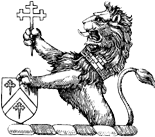
Journalism, Theology, & History
EDITORIAL
Secular newspapers are publishing articles on difficult Roman Catholic theological issues with increasing frequency.
It is fair to say, however, that nearly all secular analyses of the U.S. bishops’ recent pastoral letter on war and peace have ignored the fulcrum place of abortion and other life issues in that document’s systematic balance. Moreover, the stunning letter sent by Mother Teresa of Calcutta to the bishops on the errors of some religious sisters in the United States has become a dead letter as editors trip over each other to quote voices more sympathetic to those errors.
Pope John Paul II’s personalist phenomenology, and indeed all Catholic anthropology, gets reduced in The New York Times to a “papal war” against women. Hans Küng is declared by the same newspaper to be “a Roman Catholic theologian,” the Pontiff’s view notwithstanding.
Lord Melbourne is said to have remarked that things have come to a sorry pass when religion is allowed to interfere with one’s private life. But so long as it does intrude upon reality, those who report the spectacle are obliged at least to acknowledge the existence of certain principles that guide Catholic theology. This is particularly so when journalists report what they call division between the Pope and Catholics in the United States, and do it with an interest and consistency that suggest to the anxious reader that they almost wish it were so.
You May Also Enjoy
We can make peace with nature only by restoring harmony within ourselves. It is holiness that manifests our true nature in the plan of God.
A new book tells the story of the calamitous decline of the Catholic Church in America since 1965.
We are controlled by numerical systems run amok — creating lists and statistics, SAT scores and Nielsen ratings, Gallup and Harris polls, and the fearsome “bottom line.”

